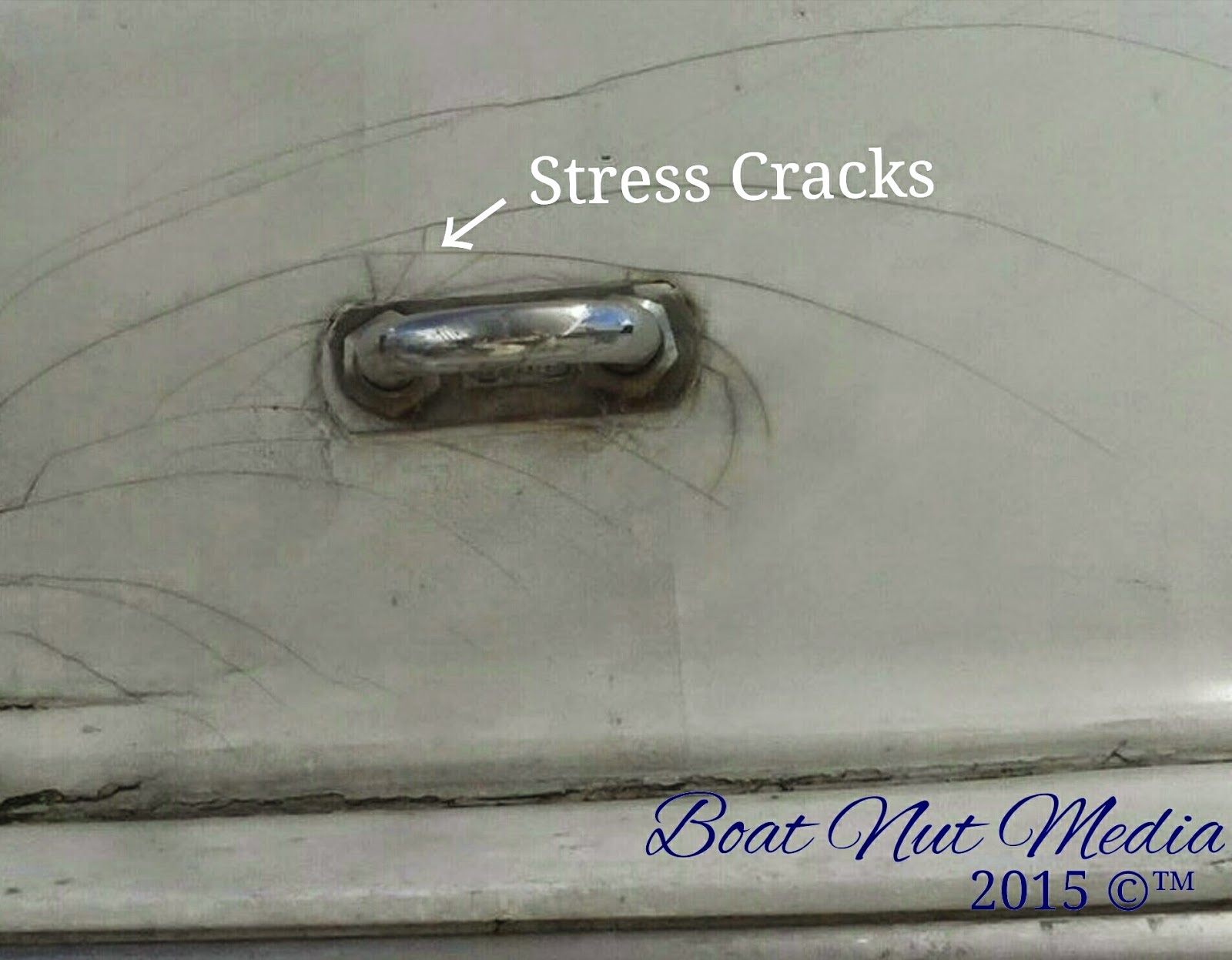Stress cracks can be identified as long(er) parallel surface cracks on the hull or deck. most common location for these to occur is on corners and radius’s where the layup of fiberglass is typically thinner, and the amount of resin is usually more than what it should be.. A note about stress cracks: they're there because your boat's hull is flexing (or was flexed from an impact or cracked from drilling) at that point. unless you can stop the flexing, you're wasting your time fixing the cracks.. * bookmark this link and order materials used in this video from totalboat! ** help support this channel via patreon: *** download our fiberglass resin guide:.
The "spider cracks" and "crazing" you see here is probably only in the gelcoat. as gelcoat ages it can get hard and brittle, and it starts to crack near fittings and in high-stress areas. even the winter freeze-thaw cycle can cause this.. Crazing in gelcoat, also known as spider cracks or stress cracks, plagues countless boaters. here's how to fix the problem. crazing is an incredibly common issue on modern fiberglass boats, and although it usually starts off as a matter of cosmetics, in severe cases these surface cracks can grow. Stress cracks are a commonly occurring phenomenon with reinforced plastic boats. a lot of boat owners get very upset when they see these cracks, sometimes needlessly, while at other times their fears are well founded. clients will often ask about cracks and the surveyor will be expected to provide answers..
